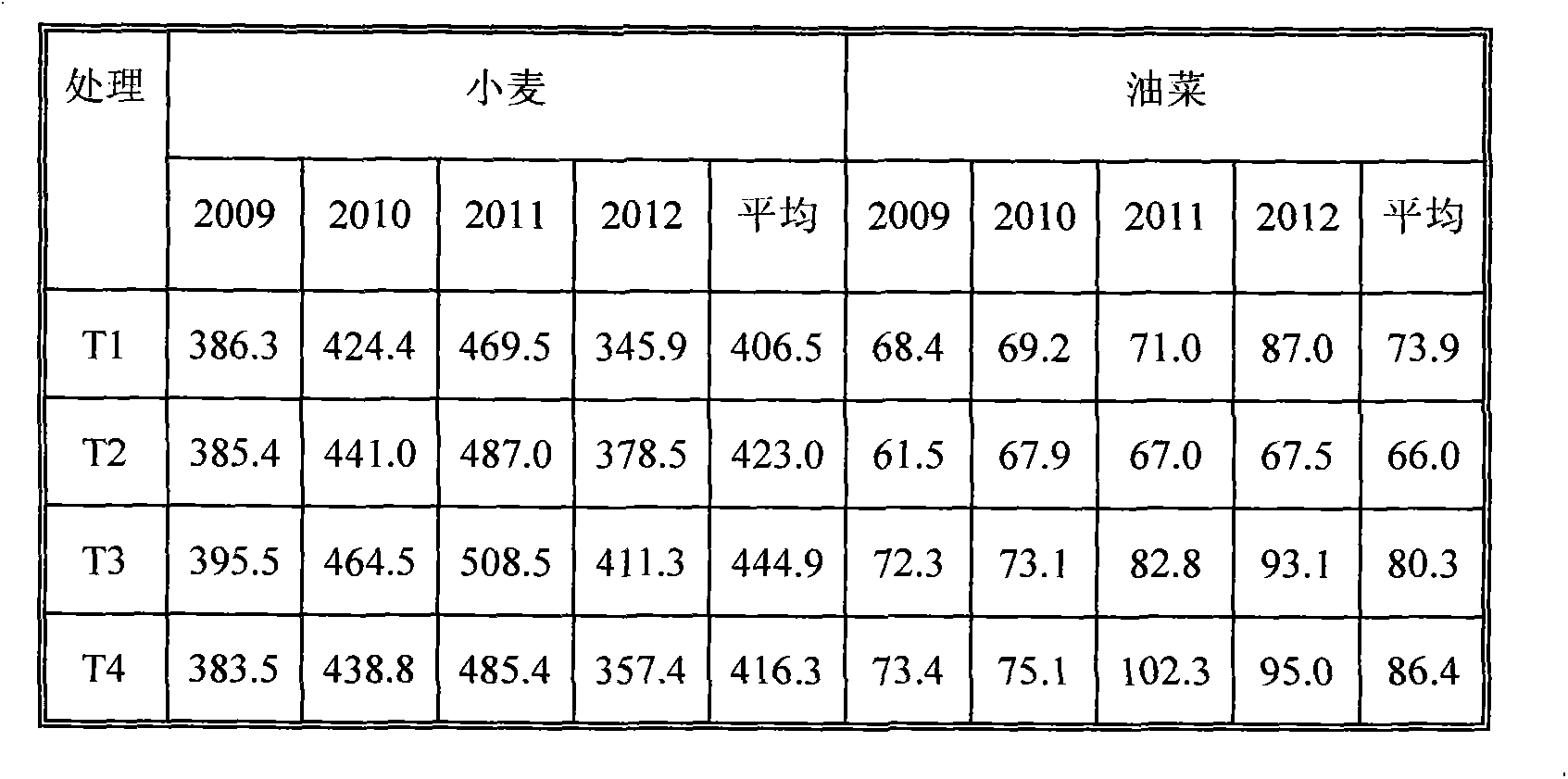Production method for multiply cropping edible rape by harvesting and returning high wheat stubble straw to field
A production method and small rapeseed technology, applied in the field of agriculture, can solve problems such as stubble removal difficulties, waste of straw resources, environmental pollution, etc., and achieve the effects of increasing the multiple cropping index and yield per unit area, and achieving significant economic and ecological benefits
- Summary
- Abstract
- Description
- Claims
- Application Information
AI Technical Summary
Benefits of technology
Problems solved by technology
Method used
Image
Examples
Embodiment 1
[0013] 3.1 Multiple cropping
[0014] The cropping system in which more than one crop (stubble) is continuously planted on the same piece of land in one year is also called multiple cropping.
[0015] 3.2 Rapeseed
[0016] It refers to the extremely early-maturing rapeseed with short growth period (65-70 days), rapid growth and development, weak vegetative growth, and small plant height (generally 60-80cm).
[0017] 3.3 One cooked irrigation area
[0018] Refers to the irrigated agricultural area where one crop is planted and harvested a year in the agricultural division.
[0019] 3.4 Harvesting with high stubble
[0020] Use a harvester or a sickle to harvest with high stubble, and the stubble height is about 20-30cm.
[0021] 3.5 Returning straw to field
[0022] Straw returning is a method of applying crop straws (such as wheat, corn straw, etc.) that are not suitable for direct feed into the soil directly or piled up and decomposed. It can improve soil properties, ac...
Embodiment 2
[0089] Planting test plan and test results
[0090] 1. Test plan and implementation description
[0091]The test was carried out continuously in Wuwei, Gansu for 4 years from 2009 to 2012. The test area is located at the eastern end of the Hexi Corridor, with an altitude of about 1531m, an average annual precipitation of about 160mm, an evaporation rate of 1919mm, a dryness of 5.85, and an annual average temperature of 7.8°C, ≥10°C The accumulated temperature is 2985°C. The annual frost-free period is 156 days, and the annual sunshine hours are 2945h. The soil of the experimental site is desert irrigated silt soil with medium fertility and irrigation conditions.
[0092] Taking different wheat stubble harvesting and straw returning methods as the experimental factors, a total of 4 treatment methods were set up, and the random block design was adopted, with 3 repetitions:
[0093] Treatment 1 (T1): Wheat was traditionally harvested with low stubble, leaving about 5 cm of stu...
PUM
 Login to View More
Login to View More Abstract
Description
Claims
Application Information
 Login to View More
Login to View More - R&D
- Intellectual Property
- Life Sciences
- Materials
- Tech Scout
- Unparalleled Data Quality
- Higher Quality Content
- 60% Fewer Hallucinations
Browse by: Latest US Patents, China's latest patents, Technical Efficacy Thesaurus, Application Domain, Technology Topic, Popular Technical Reports.
© 2025 PatSnap. All rights reserved.Legal|Privacy policy|Modern Slavery Act Transparency Statement|Sitemap|About US| Contact US: help@patsnap.com

